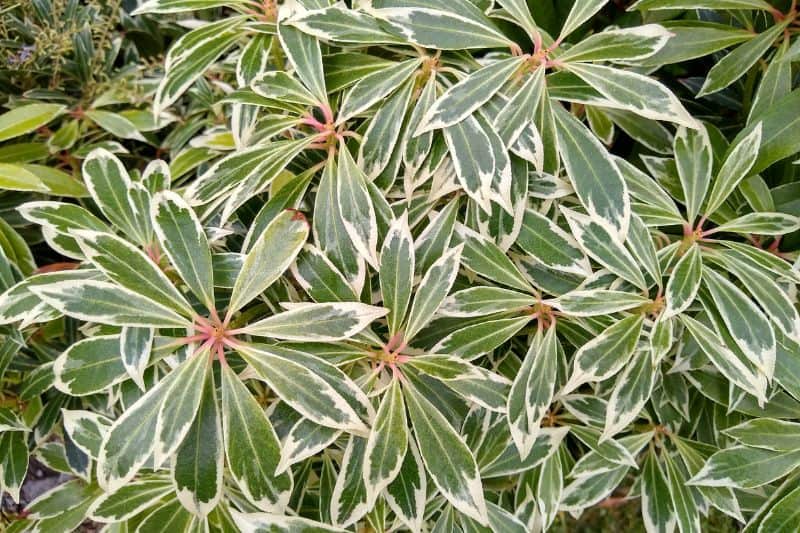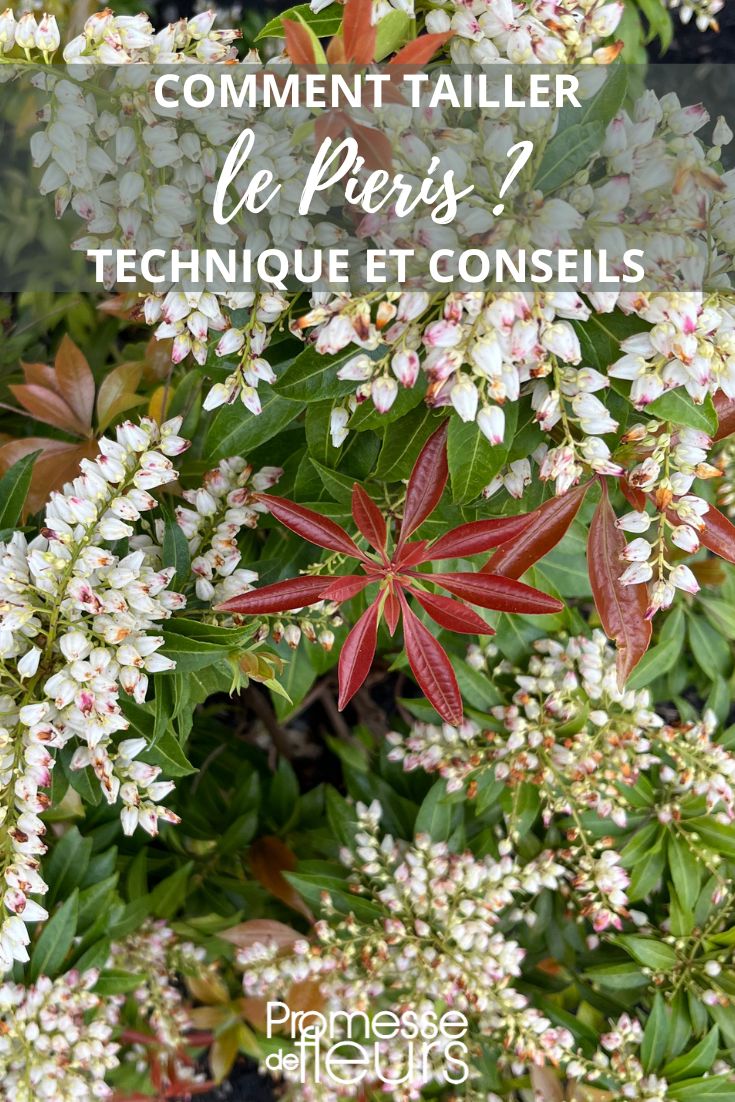Japanese andromeda, also called Pieris, is an evergreen bush prized for its beautiful flowers in clusters and its striking leaf display, often coloured in spring. Easy to maintain and, although it grows slowly, it may require occasional pruning to stay healthy and retain a harmonious habit. Discover when and how to prune your Pieris with care and simplicity.
Why prune Japanese andromeda?
If you have a Pieris in your garden, you have probably noticed: it is a bush with very slow growth that does not necessarily need pruning. However, pruning can be useful for several reasons:
- Prevent diseases: by cutting damaged or diseased branches you reduce the risk of spread of fungi or parasitic organisms. See our article on this topic: "Maladies et parasites du Pieris".
- Encourage growth: light pruning stimulates production of new shoots, often bright red in spring, which are one of the bush’s main attractions.
- Avoid energy depletion: by removing faded flowers you prevent the plant from devoting its energy to seed formation, preserving vitality for development of its leaf display and future flowers.
- Prevent a disorderly habit: over time some branches can become cumbersome or unbalance the bush’s overall shape.
When to prune Pieris?
Ideal time to prune your Japanese andromeda is just after flowering, usually in spring (May–June depending on your region). Pruning after the flower clusters have faded gives your bush time to form new flower buds for the following year.
Avoid pruning in autumn or winter, as this could compromise future flowering.
Pruning Pieris
Required equipment
- A disinfected pruning shear to avoid transmission of diseases from one plant to another.
- Gardening gloves to protect your hands from branches and leaves.
Steps for pruning
1- Observe the bush
Take a moment to examine your Pieris from all angles. Spot damaged, diseased, dead or cumbersome branches, as well as faded flowers.
2- Remove faded flowers
Start by cutting the faded flower clusters just below their base with your pruning shear. This allows the plant to concentrate its energy on growth (and its leaf display) rather than on seed production.
3- Remove dead or diseased branches
Dead branches are often dry and brittle, while diseased branches may show unusual spots or wilted areas. Cut these parts 1–2 centimetres below the damaged area, into healthy wood.
4- Shorten unbalanced branches
If some branches are too long or disorderly, you can shorten them to balance the bush’s silhouette. Prune just above a bud oriented outwards to encourage harmonious growth.
5- Open out the centre of the bush
To improve air circulation and avoid mould issues, remove a few branches from the centre of the bush, especially if they cross or rub together. This will also allow more light to reach the leaves.
Practical tips for successful pruning
- Be moderate: Japanese andromeda is a slow-growing bush. Avoid pruning more than one third of the plant at once. Severe pruning can compromise next year’s flowering and exhaust the plant.
- Prefer slanted cuts: a slightly angled cut prevents water from sitting on wounds, reducing risk of rot.
- Be patient: if you have a young or recently planted Pieris, give it time to establish (1–2 years) before pruning, except to remove dead or diseased parts.
And after?
Once your Pieris has been pruned, take a few moments to clear debris around the plant. Give your bush a little extra care:
- Mulch: add a layer of organic mulch at the base of the plant to preserve moisture and protect its roots.
- Watering: provide moderate watering after pruning, especially if weather is dry. Prefer rainwater.
- Fertiliser: enrich the soil with a fertiliser for acidophilous plants (such as rhododendrons and azaleas) to help recovery.


































Comments